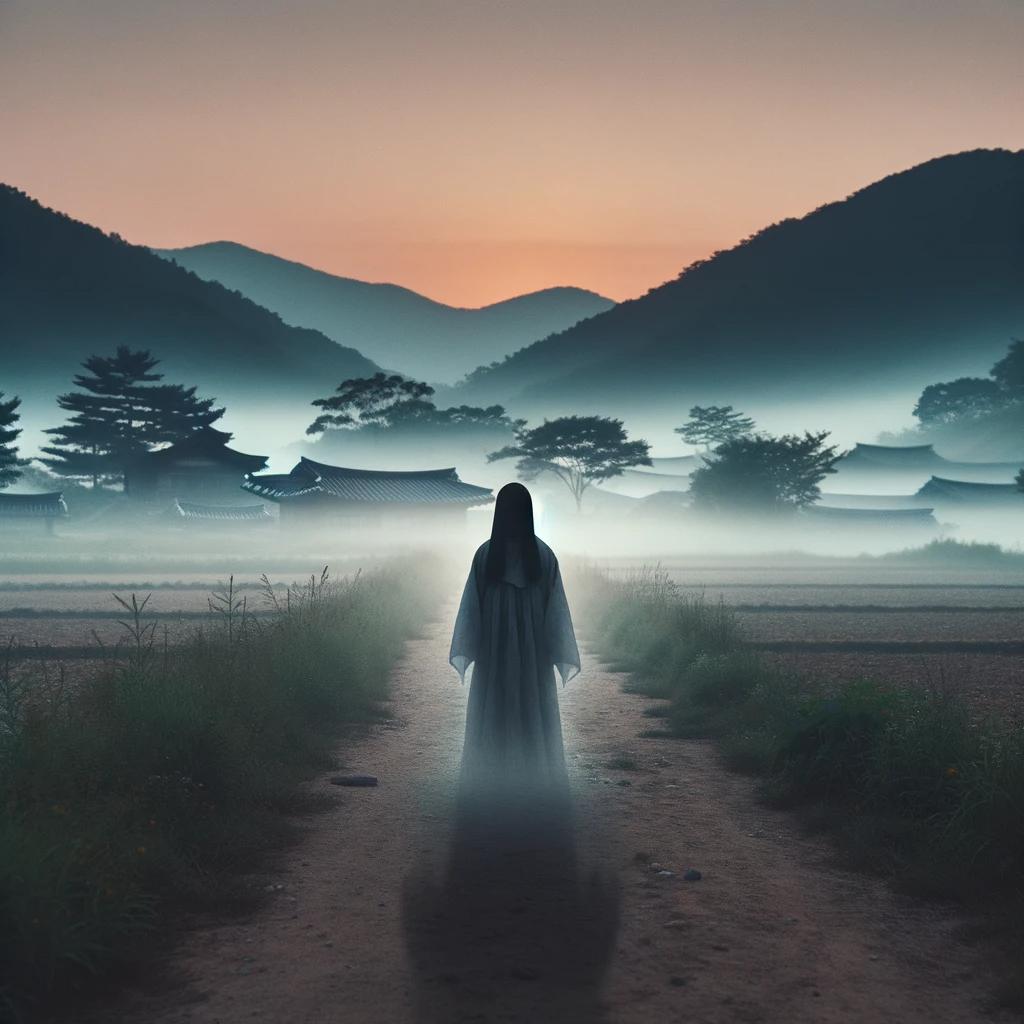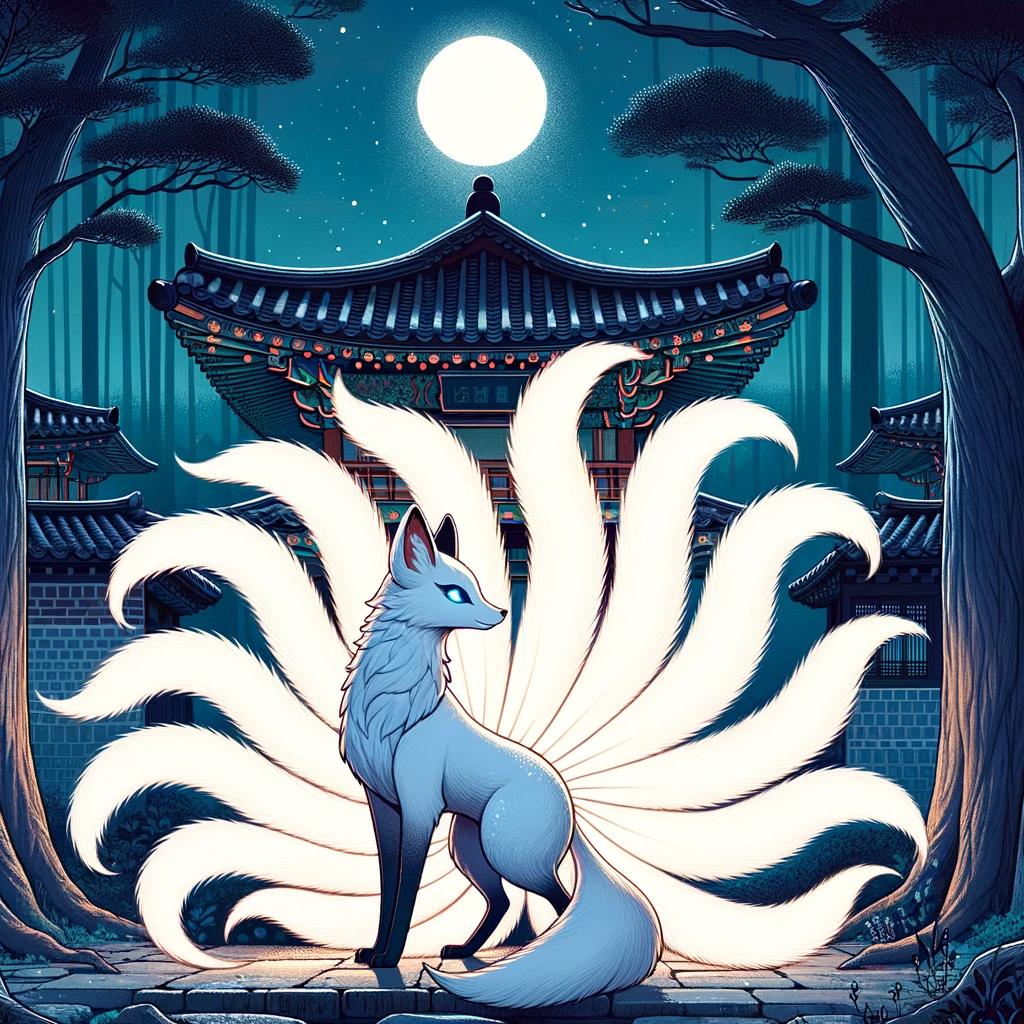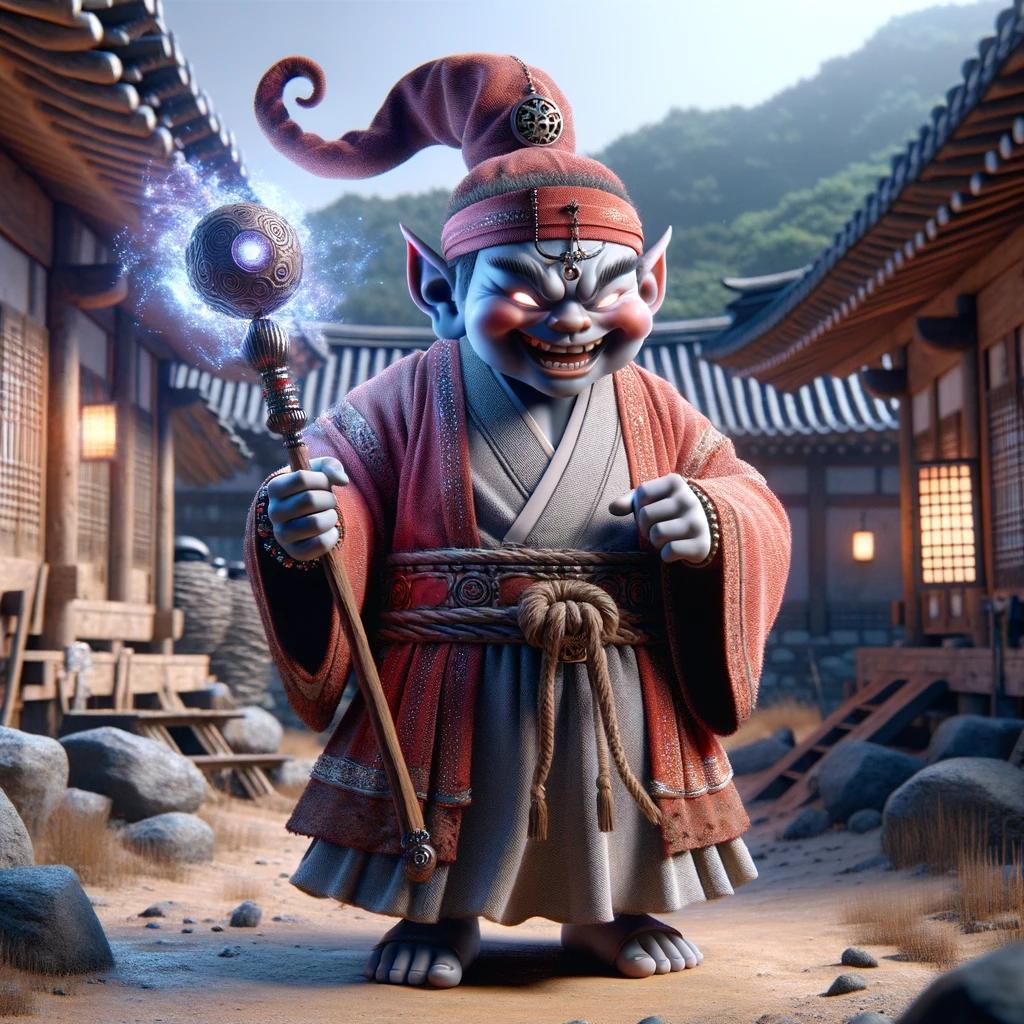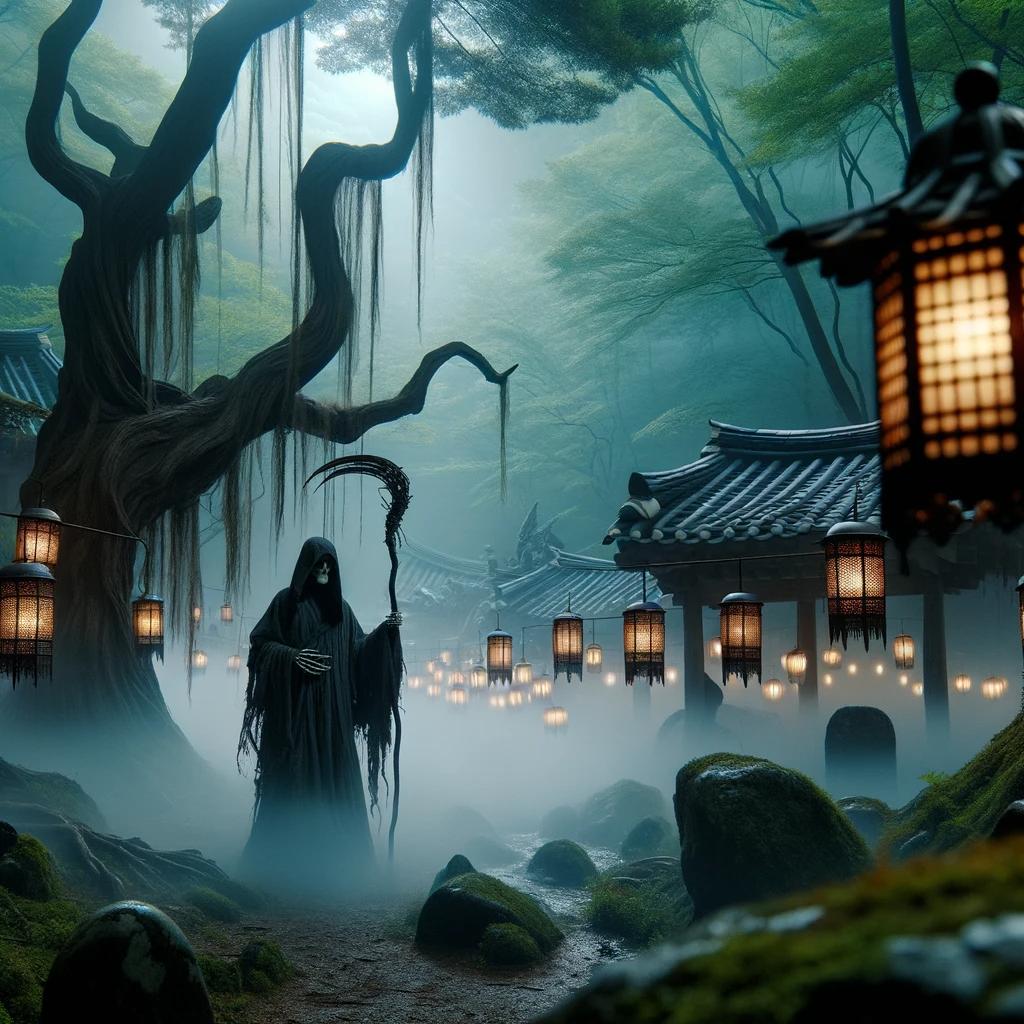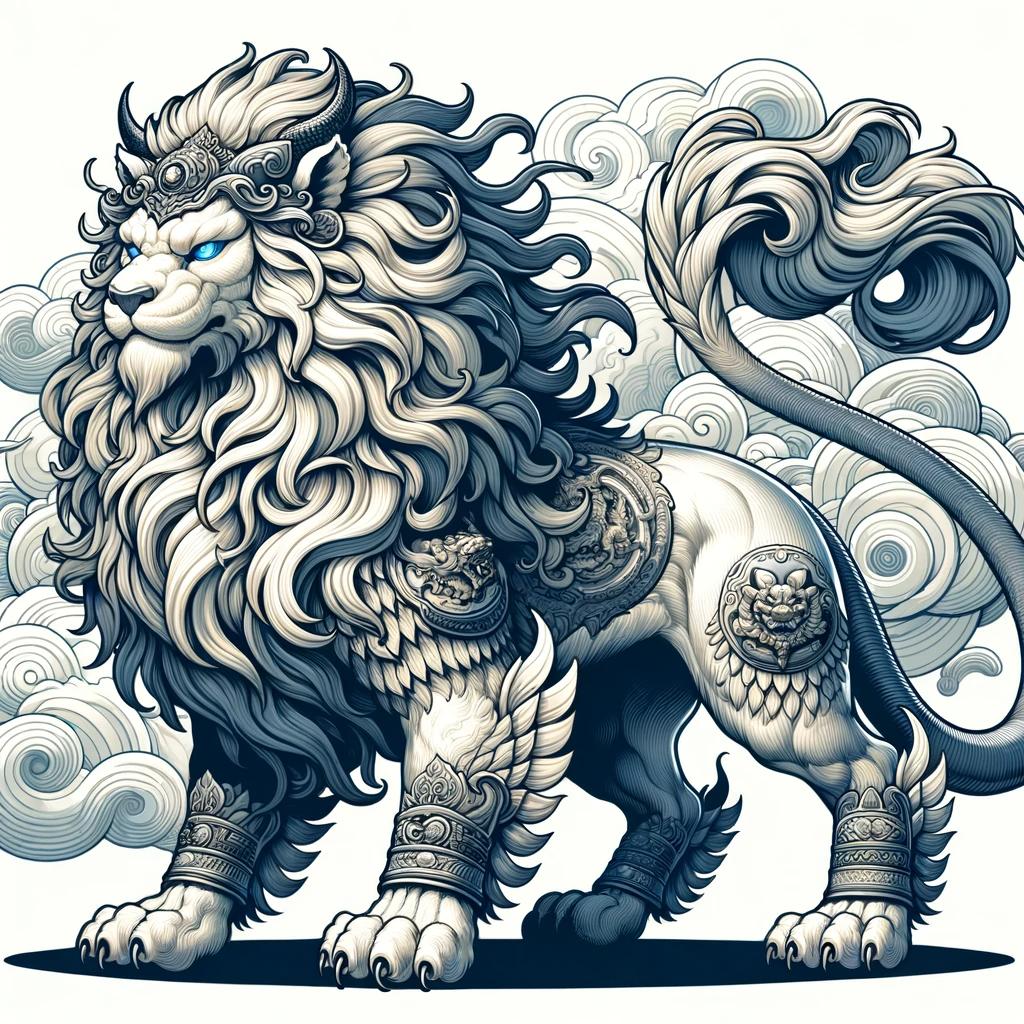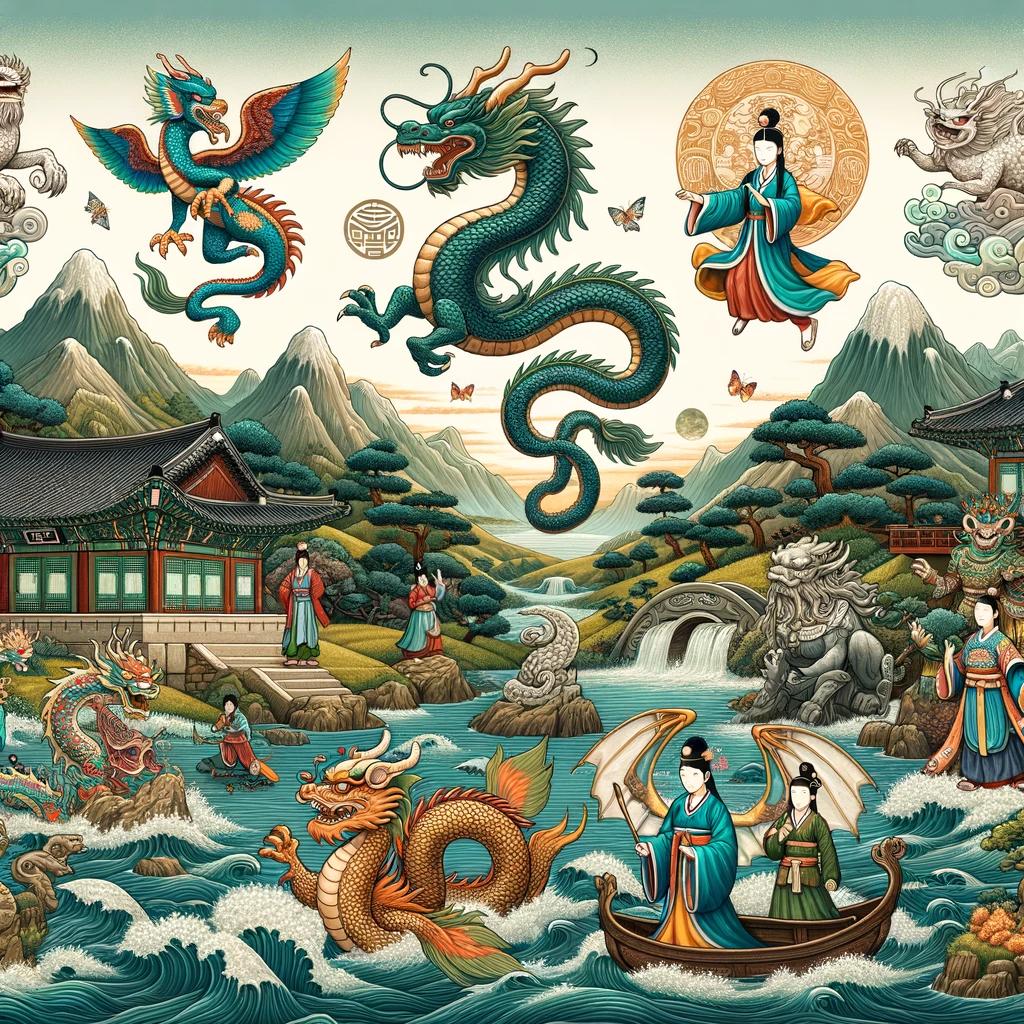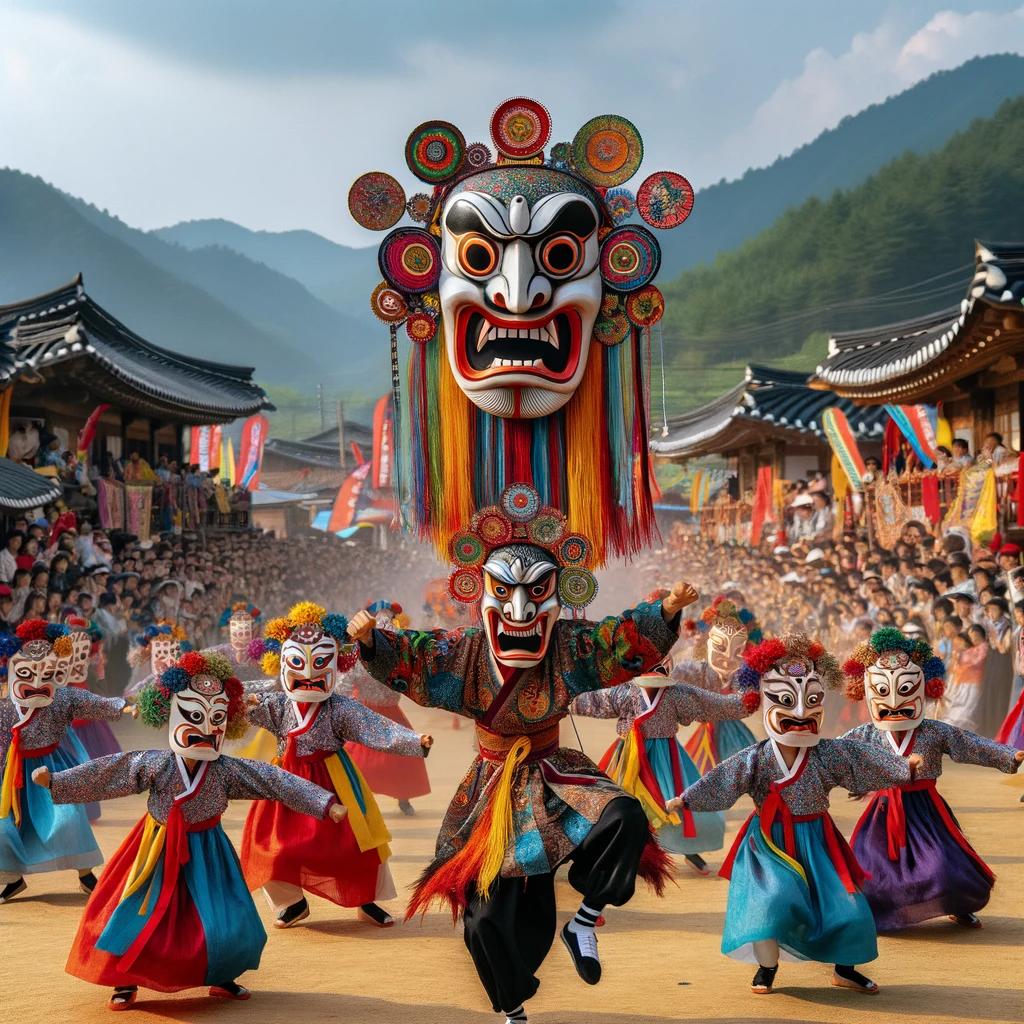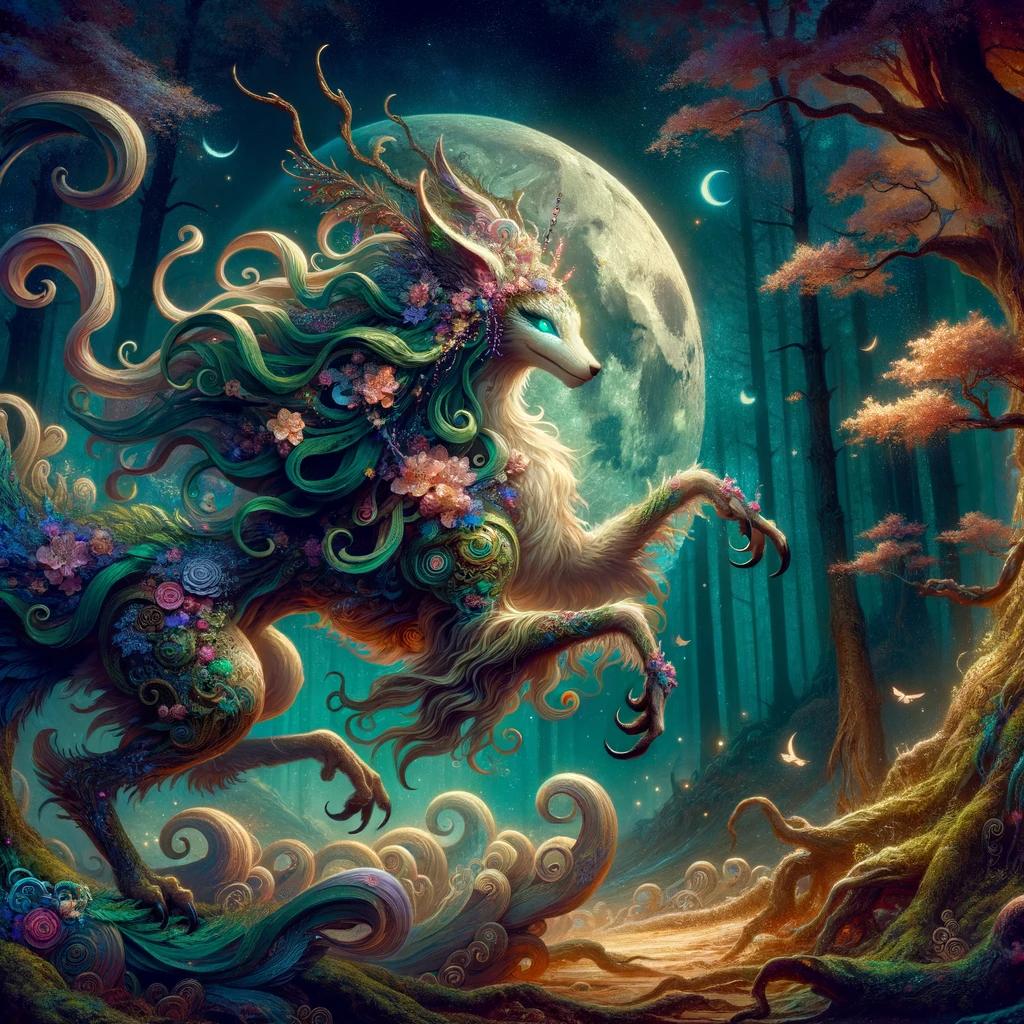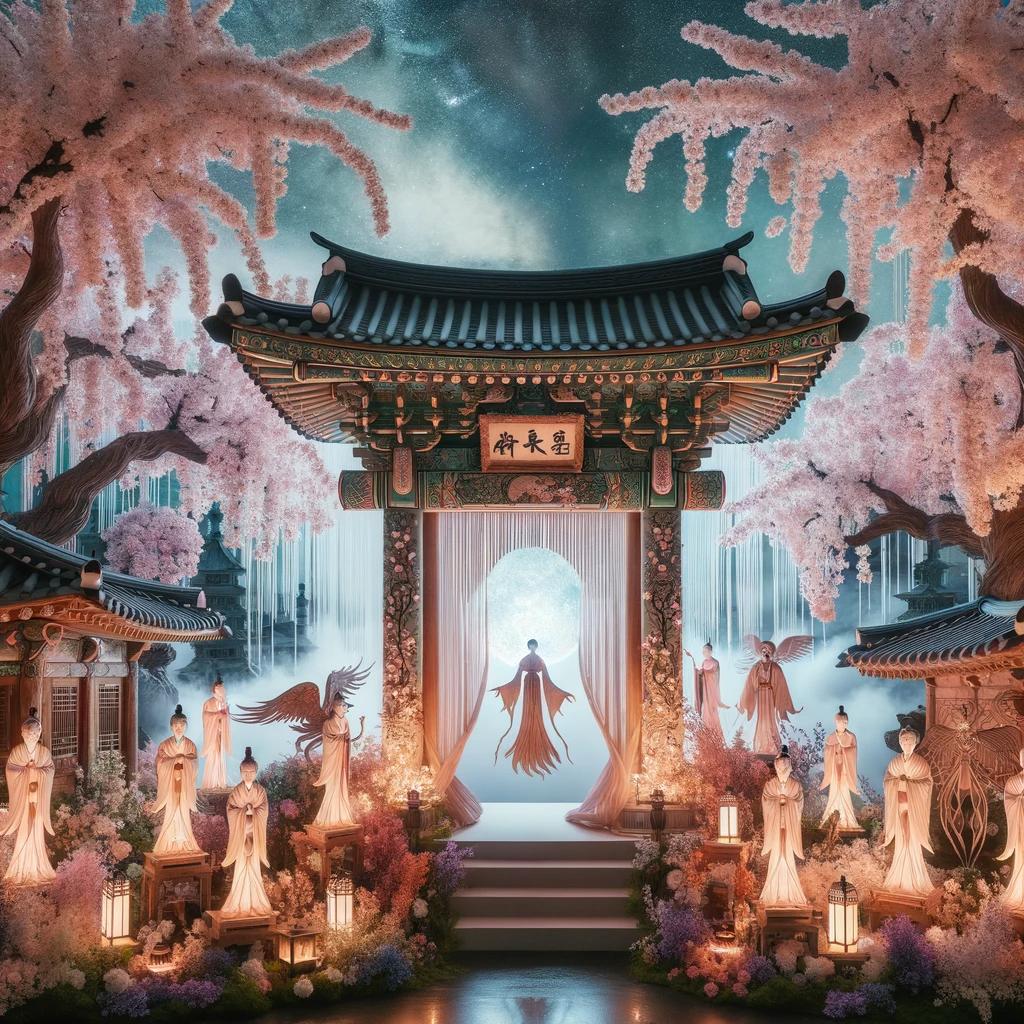Mongdal Ghost Korean Folklore: Unveiling the Haunting Spirits from Korean Traditions
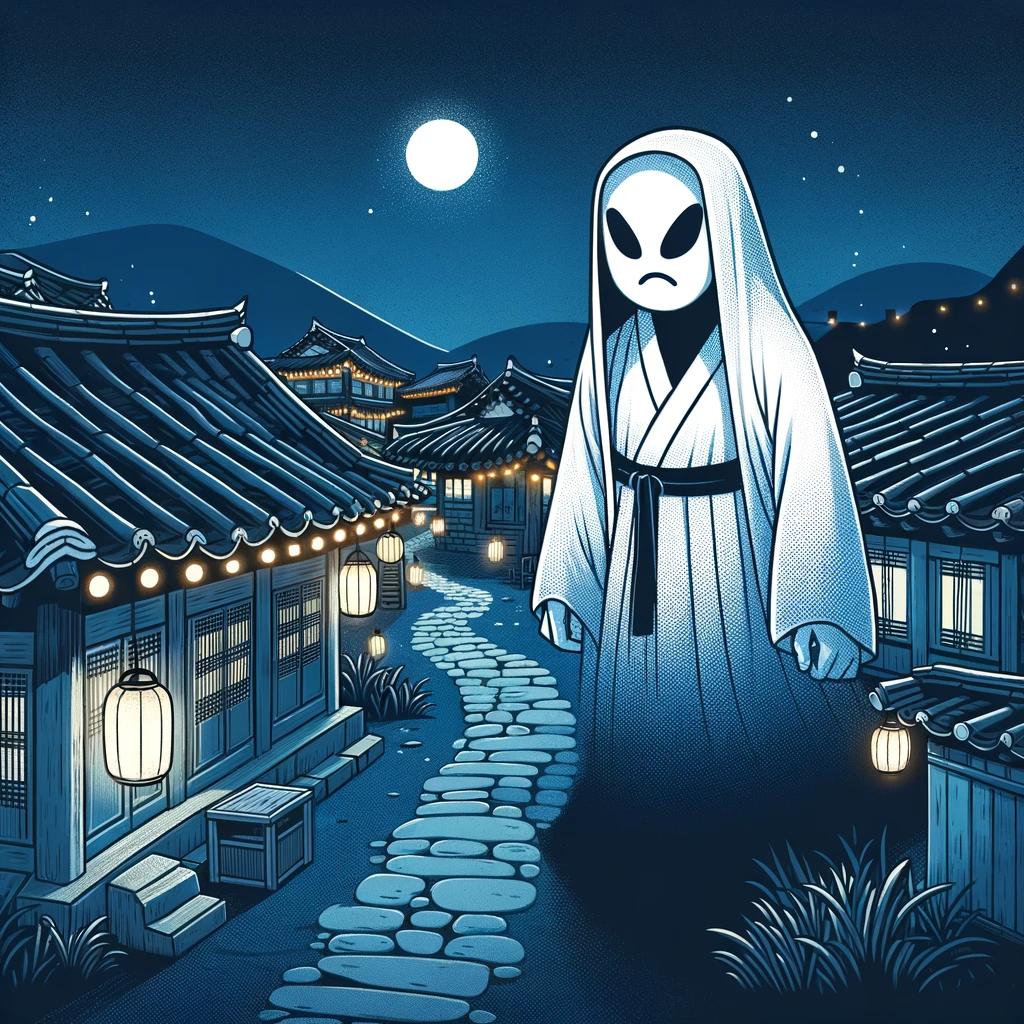
Mongdal ghost Korean folklore is a captivating aspect of Korean traditions and beliefs. In this article, we will explore the origins, legends, and types of Mongdal ghosts, such as the vengeful virgin ghost (Cheonyeo Gwishin) and the unmarried male ghost (Chonggak Gwishin).
Additionally, we’ll delve into the supernatural abilities and rituals associated with these haunting spirits. From depictions in Korean films and TV shows to international adaptations, we’ll also discuss their presence in popular culture.
Join us as we uncover the cultural significance of Mongdal ghost Korean folklore in this intriguing exploration.
Understanding Mongdal Ghosts: A Brief Overview
Mongdal ghosts are fascinating supernatural entities deeply rooted in Korean folklore. These haunting spirits are believed to be the restless souls of the deceased who have not fulfilled their purpose in life.
To delve into the subject of Mongdal ghost Korean folklore, it is crucial to comprehend their origins, legends, and various types, which are intricately intertwined with the cultural beliefs and traditions of Korea.
The legends of Mongdal ghosts have been passed down through generations, enriching the tapestry of Korean folklore. These spectral beings possess unique characteristics that set them apart from other supernatural entities.
As we explore the tales of Mongdal ghosts, we discover the intertwining threads of love, loss, tragedy, and unfulfilled desires.
Origins and Legends of Mongdal Ghosts
The origins of Mongdal ghosts can be traced back to ancient Korean legends and folklore. The tales speak of individuals who met untimely and tragic ends, leaving behind unresolved emotions and unfinished business in the realm of the living.
They are said to be bound to the earthly plane until their grievances are addressed or their purpose fulfilled.
These captivating legends serve as a window into the historical and societal contexts of the time.
They shed light on the perspectives, beliefs, and values of the Korean people, revealing their deep-rooted connection to spirituality and the afterlife.
Types of Mongdal Ghosts
Mongdal ghosts encompass a variety of spectral entities, each with its own unique traits and stories. Two prominent types include the Cheonyeo Gwishin, or the vengeful virgin ghost, and the Chonggak Gwishin, the unmarried male ghost.
- Cheonyeo Gwishin: These spirits are depicted as vengeful women who endured hardships or died tragically in their quest for love or marriage. Their unresolved emotions manifest as restless spirits seeking retribution against those who wronged them.
- Chonggak Gwishin: Male counterparts to the Cheonyeo Gwishin, these ghosts represent unmarried men who were unable to find love or companionship in their mortal lives.
Their spirits strive to find peace by fulfilling their unrequited desires through various customs and rituals.
Other types of Mongdal ghosts within Korean folklore include the Mul Gwishin, spirits of individuals who perished by drowning, and the Dalgyal Gwishin, an eerie, eyeless, egg-like ghost believed to bring impending doom to those who encounter them.
These diverse manifestations of Mongdal ghosts exemplify the intricate beliefs surrounding death, relationships, and societal norms in traditional Korean culture.
Origins and Legends of Mongdal Ghosts
Mongdal ghosts, a significant element in Korean folklore, have a rich history and fascinating legends associated with their origins.
These spectral beings are believed to be the spirits of the deceased who have unresolved purposes in life, haunting the living and seeking closure beyond the realms of the living world.
The stories of Mongdal ghosts have been passed down through generations, captivating the imagination of Koreans for centuries. It is said that the belief in these supernatural entities originated from a deep-rooted reverence for the spirits of the departed and the fear of their lingering presence.
Through time, these legends evolved and took shape into distinct types and characters within the Korean folklore.
Cheonyeo Gwishin: The Vengeful Virgin Ghost
One prominent type of Mongdal ghost is the Cheonyeo Gwishin, which refers to vengeful virgin ghosts. According to the tales, these female spirits were unable to fulfill their purpose in life, leaving behind resentment and sorrow.
Adorned in white mourning attire called ‘sobok’ and with flowing loose hair, the Cheonyeo Gwishin symbolizes unfulfilled desires and lost opportunities.
These ghostly apparitions are believed to hold grudges against those who have caused them harm, relentlessly pursuing them even after death.
Whether the anguish arises from failed love or societal pressures, the tales of Cheonyeo Gwishin serve as cautionary reminders of the consequences of unfulfilled aspirations.
Chonggak Gwishin: The Unmarried Male Ghost
The Chonggak Gwishin, also known as the unmarried male ghost, is the male counterpart to the Cheonyeo Gwishin.
These spirits are believed to be those who died without the experience of marriage. Similarly to their female counterparts, Chonggak Gwishin are thought to harbor lingering emotions and unfulfilled wishes.
Shrouded in a sense of longing and isolation, these unmarried male ghosts are often depicted longing for companionship and seeking solace in the afterlife.
Traditional beliefs suggest that shamans perform rituals to unite these ghostly figures, with hopes of granting them the chance to find peace and fulfillment in the realm of the departed.
Other Haunting Spirits in Korean Folklore
Alongside the vengeful virgin and unmarried male ghosts, Korean folklore presents us with several other intriguing types of Mongdal ghosts.
These include the Mul Gwishin, known as the water ghost, which is believed to be the spirit of someone who met a watery demise. It is said that encountering this ghostly entity may lead to a dreadful fate, as it has the ability to pull unsuspecting individuals into its watery depths.
Additionally, there is the Dalgyal Gwishin, a ghostly figure in the form of an egg without eyes, nose, mouth, or limbs. According to popular belief, sighting this ghostly entity is an omen of impending doom and a sign of an inevitable demise.
The fascinating and chilling tales of Mongdal ghosts in Korean folklore offer a window into the cultural beliefs and traditions surrounding the supernatural realm. These legends continue to captivate audiences and serve as a reflection of the complex relationship between the living and the dead in Korean society.
Types of Mongdal Ghosts:
Within Korean folklore, Mongdal ghosts encompass a variety of haunting spirits. Let’s explore the different types:
Cheonyeo Gwishin: The Vengeful Virgin Ghost
The Cheonyeo Gwishin, also known as the vengeful virgin ghost, represents women who were unable to fulfill their purpose in life. Adorned in white mourning garments, known as ‘sobok,’ and with flowing hair that they cannot tie like married women, these spirits harbor resentment towards those who wronged them during their lifetime.
It is believed that they relentlessly pursue their offenders.
Chonggak Gwishin: The Unmarried Male Ghost
The Chonggak Gwishin, the male counterpart of the Cheonyeo Gwishin, refers to the ghost of unmarried men. In certain cases, shamanic rituals are performed to unite these two types of ghosts in hopes that they find companionship and peace in the afterlife.
Other Haunting Spirits in Korean Folklore
Aside from the two main types mentioned above, Korean folklore also includes other intriguing ghostly entities:
- Mul Gwishin: Known as the ghost of water, this spirit is believed to be the restless soul of someone who drowned, capable of dragging unsuspecting individuals into watery depths if they’re not cautious.
- Dalgyal Gwishin: A peculiar ghost resembling an eyeless, noseless, mouthless, and limbless egg-shaped entity.
According to popular belief, encountering this ghost is said to be an omen of impending death.
- Gumiho: A nine-tailed fox-shaped ghost with the ability to transform into a beautiful woman, luring unsuspecting men to their demise.
The cunning and seductive nature of this particular ghost makes it particularly feared in Korean folklore.
These haunting spirits from Korean folklore provide a window into the beliefs and traditions of the past, offering not only entertainment but also a glimpse into the intricate relationship between life and death in Korean society.
Supernatural Abilities and Characteristics of Mongdal Ghosts
Mongdal ghosts in Korean folklore possess a variety of supernatural abilities and exhibit distinct characteristics that make them both fearsome and captivating. Understanding these traits offers a deeper insight into the nature of these haunting spirits.
Cheonyeo Gwishin: The Vengeful Virgin Ghost
The Cheonyeo Gwishin, or vengeful virgin ghost, is known for her distinctive appearance and supernatural powers. Often draped in a mournful white mourning dress called ‘sobok’ with loose hair, she represents unfulfilled desires and unresolved grievances from her past life.
These ghosts are believed to hold resentment against those who have inflicted harm upon them and relentlessly pursue their tormentors. Their ability to channel negative energy makes them potent entities to be feared.
Chonggak Gwishin: The Unmarried Male Ghost
The Chonggak Gwishin, the male counterpart to the Cheonyeo Gwishin, embodies the spirits of unmarried men who passed away without fulfilling their life’s purpose. These ghosts typically appear as forlorn figures, carrying the weight of their unrequited desires.
Moreover, rituals are sometimes performed in hopes of uniting these two types of ghosts, with the belief that their union would bring them peace in the afterlife.
Other Haunting Spirits in Korean Folklore
Beyond the Cheonyeo and Chonggak Gwishin, Korean folklore encompasses an array of other haunting spirits.
The Mul Gwishin, also known as the water ghost, is believed to be the spirit of someone who drowned. Stories tell of their ability to drag unsuspecting victims into watery depths, serving as a cautionary tale to those who venture near bodies of water without vigilance.
Another intriguing figure is the Dalgyal Gwishin, a ghostly entity shaped like an eyeless, noseless, mouthless egg, devoid of limbs. According to popular belief, encountering this ghost is an omen of impending doom and death.
The most feared among them all is the Gumiho, a nine-tailed fox ghost. Possessing seductive prowess and the ability to shape-shift into a beautiful woman, this cunning and powerful entity lures unsuspecting men to their demise.
The folklore surrounding the Gumiho often serves as a cautionary tale against falling victim to deceitful charms.
The supernatural abilities and distinct characteristics of Mongdal ghosts in Korean folklore make them an enduring and captivating aspect of the country’s cultural heritage.
Exploring these legends and beliefs not only offers an intriguing glimpse into the world of the supernatural but also sheds light on the complex relationship between the living and the dead in Korean society.
Rituals, Traditions, and Superstitions Surrounding Mongdal Ghosts
In Korean folklore, Mongdal ghosts are surrounded by a myriad of rituals, traditions, and superstitious beliefs. These practices have been passed down through generations and continue to be observed in certain communities to this day.
The rituals associated with Mongdal ghosts are aimed at pacifying their spirits and ensuring their peaceful transition to the afterlife.
One common tradition is the offering of food and other items to appease the restless spirits.
Families may prepare elaborate meals and set them out for the ghost, typically at the anniversary of the deceased’s passing or during specific holidays. It is believed that by providing sustenance, the family can maintain a harmonious relationship with the ghost and prevent any potential haunting or misfortune.
- Candle lighting ceremonies: Another prevalent ritual involves lighting candles at the gravesite or in the ancestral shrine. This act not only symbolizes remembrance but also attracts the spirit’s attention and guides them towards the spiritual realm.
- Prayer and chanting: Traditional prayers and chants are recited to calm the Mongdal ghost and help them find solace.
These spiritual practices serve as a way to communicate with the spirit world and seek forgiveness or resolution for any unfinished business.
- Talismans and amulets: People often carry or display talismans and amulets believed to ward off malicious spirits or protect against supernatural encounters.
These objects can range from inscribed charms to blessed herbs or sacred stones, each with its own significance in repelling negative energies.
- Dream interpretation: Dreams are considered a channel for communication with the spirit realm.
In Korean culture, dreams have deep-rooted symbolism, and individuals may consult dream interpreters to seek insight into their encounters with Mongdal ghosts.
Alongside these rituals, various superstitious beliefs surround Mongdal ghosts.
One prevalent belief is the importance of avoiding certain actions or behaviors that might invite the wrath of the spirits. It is believed that speaking ill of the dead or disrespecting their memory can provoke their vengeful nature and bring misfortune upon the living.
Additionally, there are specific precautions to be taken when encountering a Mongdal ghost, such as refraining from looking into their eyes or directly engaging with them. It is thought that direct contact with these spirits can have dire consequences, including illness, possession, or being cursed.
Overall, rituals, traditions, and superstitious beliefs play a significant role in navigating the complex relationship between the living and the Mongdal ghosts in Korean folklore. These customs provide a sense of connection to ancestral spirits and offer a means of addressing unfinished business or seeking protection in a realm that intertwines the physical and the spiritual.
Mongdal Ghosts in Popular Culture:
Depictions in Korean Films and TV Shows
Korean cinema and television have long been fascinated with the eerie and haunting tales of Mongdal ghosts. These supernatural entities have found their place in numerous films and TV shows, captivating audiences with their chilling presence and compelling narratives.
One notable example is the 2003 horror film “A Tale of Two Sisters” directed by Kim Jee-woon. The movie tells the story of two sisters who return home to live with their father and stepmother, only to encounter a vengeful ghost who haunts their household.
This critically acclaimed film is known for its atmospheric tension and psychological horror, showcasing the complexity and depth of Mongdal ghosts in Korean storytelling.
In the realm of television, the drama series “Master’s Sun” (2013) gained immense popularity for its unique blend of romance and supernatural elements.
The story revolves around a woman who can see ghosts and a stoic CEO who unknowingly becomes her protector. Mongdal ghosts play a central role in the series, as the protagonist helps wandering spirits find peace and closure, exploring themes of love, redemption, and the afterlife.
International Adaptations and Hollywood Remakes
The captivating tales of Mongdal ghosts have also captured the attention of international audiences, leading to adaptations and remakes in various forms of media outside of Korea.
In 2016, the South Korean horror film “The Wailing” directed by Na Hong-jin gained international acclaim.
This atmospheric thriller delves into the story of a small village plagued by mysterious deaths believed to be connected to a malevolent spirit. The film masterfully combines folklore, suspense, and psychological horror, showcasing the impact of Mongdal ghosts beyond the borders of Korea.
As the fascination with Korean entertainment grows on a global scale, there have been discussions about the potential for Hollywood remakes featuring Mongdal ghosts. Given their unique cultural background and gripping narratives, these haunting entities present an opportunity for cross-cultural exploration and reinvention within the film industry.
A Korean version of Ghostbusters, for example, could bring a fresh perspective to the world of supernatural comedy by incorporating the rich tapestry of Mongdal ghost folklore.
Through their depictions in Korean films, TV shows, and potential international adaptations, Mongdal ghosts have become iconic figures in popular culture.
Their presence continues to captivate audiences, offering a glimpse into the darker side of Korean folklore and expanding the horizons of supernatural storytelling.
Exploring the Cultural Significance of Mongdal Ghosts
The cultural significance of Mongdal ghosts in Korean folklore runs deep, reflecting the beliefs, values, and traditions of the Korean people. Understanding the cultural significance unveils the profound impact these haunting spirits have had on various aspects of Korean society.
Mongdal ghosts serve as a powerful metaphor for unfulfilled desires and lost potential. The tales of the vengeful virgin ghost (Cheonyeo Gwishin) and the unmarried male ghost (Chonggak Gwishin) highlight societal expectations and pressures surrounding marriage, family, and personal goals.
These spirits personify the yearnings and regrets of individuals who were unable to achieve their aspirations in life.
These ghostly legends also shed light on the range of emotions associated with loss and unfinished business.
They symbolize the unspoken sorrow, anger, and longing that linger in the hearts and minds of those left behind. The tales of Mongdal ghosts serve as cautionary tales, reminding individuals of the importance of fulfilling their purpose and finding peace before passing into the afterlife.
Moreover, Mongdal ghosts have become an integral part of Korean culture, inspiring various art forms, including literature, theater, and visual arts. Artists and storytellers have used these haunting spirits as sources of inspiration, exploring themes of love, desire, and regret.
They have also been depicted in numerous Korean films and TV shows, captivating audiences with their supernatural abilities and eerie presence.
The cultural significance of Mongdal ghosts extends beyond entertainment and art.
Rituals, traditions, and superstitions surrounding these spirits still resonate with some Korean communities. From performing rituals to appease the spirits to engaging in customs that ward off their malevolent presence, these practices uphold a connection to the ancient beliefs and traditions of Korea.
The exploration of Mongdal ghosts in popular culture further highlights their adaptability and lasting impact on global audiences. Their recognition has transcended borders, with international adaptations and Hollywood remakes introducing these captivating spirits to a wider audience.
This cultural exchange serves as a testament to the enduring allure and fascination with Korean folklore.
In conclusion, understanding the cultural significance of Mongdal ghosts in Korean folklore provides a glimpse into the beliefs, values, and traditions of the Korean people.
These haunting spirits symbolize unfulfilled desires, accompanying sorrows, and the importance of finding peace and purpose in life. Their influence extends beyond traditional tales, inspiring various art forms and captivating audiences worldwide.
The enduring presence of Mongdal ghosts in popular culture is a testament to their cultural significance and the universal allure of Korean folklore in the modern world.
.











